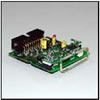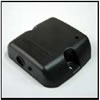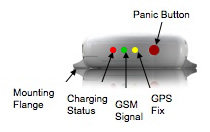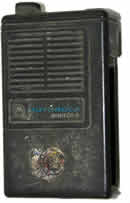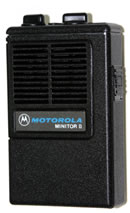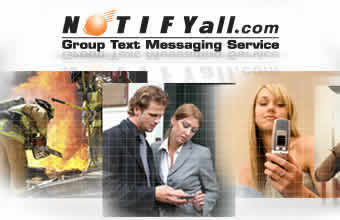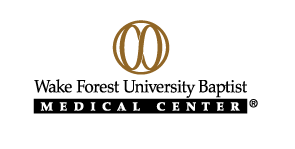BloostonLaw Telecom Update Published by the Law Offices of Blooston, Mordkofsky, Dickens, Duffy & Prendergast, LLP [Selected portions reproduced here with the firm's permission.] www.bloostonlaw.com | Vol. 12, No. 14 | April 8, 2009 |
Enforcement Of “Red Flag” Rules Begins May 1 The Federal Trade Commission (FTC) last year suspended enforcement of the “Red Flag” Rules until May 1, 2009, to give creditors and financial institutions additional time to implement identity theft programs. Under the new rules, all businesses that maintain a creditor-debtor relationship with customers, including virtually all telecommunications carriers, must adopt written procedures designed to detect the relevant warning signs of identify theft, and implement an appropriate response. The Red Flag compliance program was in place as of November 1, 2008. But the FTC will not enforce the rules until May 1, 2009, meaning only that a business will not be subject to enforcement action by the FTC if it delays implementing the program until May 1. Other liabilities may be incurred if a violation occurs in the meantime. The requirements are not just binding on telcos and wireless carriers that are serving the public on a common carrier basis. They also apply to any “creditor” (which includes entities that defer payment for goods or services) that has “covered accounts” (accounts used mostly for personal, family or household purposes). This also may affect private user clients who use radios internally, as well as many telecom carriers’ non-regulated affiliates and subsidiaries. BloostonLaw has prepared a Red Flag Compliance Manual to help your company achieve compliance with the Red Flag Rules. Please contact Gerry Duffy (202-828-5528) or Mary Sisak (202-828-5554) with any questions or to request the manual. INSIDE THIS ISSUE - FCC launches Inquiry on national broadband plan.
- NTIA’s broadband program goals outlined by Seifert at House panel hearing.
- M-Spam bill would ban text messages to wireless numbers on Do Not Call registry.
- Several parties seek reconsideration of FCC’s order regarding unlicensed devices below 900 MHz and in the 3 GHz band
- Fourth quarter 2008 inflation adjustment figures for cable operators now available.
FCC Launches Inquiry On National Broadband Plan The FCC, at today’s open meeting, adopted a Notice of Inquiry (NOI) seeking comment on developing a national broadband plan pursuant to section 6001(k) of the American Recovery and Reinvestment Act (ARRA) of 2009. In the ARRA—also known as the “stimulus package”. In the ARRA, Congress charged the Commission with creating a national broadband plan, and the NOI represents the first step toward that end. The NOI seeks input from all stakeholders: consumers, industry, large and small businesses, non-profits, the disabilities community, governments at the federal, state, local and tribal levels, and all other interested parties. BloostonLaw will be preparing comments for interested clients, and will circulate them ahead of the June 8 deadline. The Commission must deliver the plan to Congress by Feb. 17, 2010. It will provide a roadmap toward achieving the goal of ensuring that all Americans reap the benefits of broadband. The Recovery Act requires the plan to explore several key elements of broadband deployment and use, and the Commission now seeks comment on these elements, including: - The most effective and efficient ways to ensure broadband access for all Americans
- Strategies for achieving affordability and maximum utilization of broadband infrastructure and services
- Evaluation of the status of broadband deployment, including the progress of related grant programs
- How to use broadband to advance consumer welfare, civic participation, public safety and homeland security, community development, health care delivery, energy independence and efficiency, education, worker training, private sector investment, entrepreneurial activity, job creation, and economic growth, and other national purposes.
Acting Chairman Michael Copps said: “This Commission has never, I believe, received a more serious charge than the one to spearhead development of a national broadband plan. Congress has made it crystal clear that it expects the best thinking and recommendations we can put together by next February. If we do our job well, this will be the most formative—indeed transformative— proceeding ever in the Commission’s history.” Commissioner Jonathan Adelstein said: “A key part of any meaningful broadband plan must be accurate, reliable and detailed data on broadband deployment. I am pleased that today’s item, among many other important questions, asks how we can build on our current data collection methods to determine who is participating in the broadband revolution, and who is not, including those in tribal lands and rural areas. It is only with these data – which we should have been collecting all along – that we can make sound policy decisions. Today’s NOI reminds us that we have also been charged by Congress to develop a comprehensive rural broadband strategy under the 2008 Farm Bill with our partners at the Department of Agriculture. I look forward to working with my colleagues on that important plan, which is due to Congress next month.” Commissioner Robert McDowell said: “It is equally as important that consumers continue to have the freedom to pull – or push – the legal content of their choice anytime, anywhere, and on the device of their choosing within the physical limitations of the networks they use. The market is rushing to satisfy the latest consumer demand in this regard. Let’s make sure the government does not get in the way of these developments. Accordingly, we must avoid counterproductive government mandates that can disappear in a two, four or eight year election cycle. Such short time horizons will merely scare away investors.” BloostonLaw contacts: Hal Mordkofsky, Ben Dickens, Gerry Duffy, Mary Sisak, and Cary Mitchell. NTIA’s Broadband Program Goals Outlined By Seifert At House Panel Hearing At last week’s House Energy and Commerce Subcommittee on Communications, Technology and the Internet oversight hearing, Mark Seifert from the National Telecommunications and Information Administration presented NTIA’s position on implementing the Broadband Technology Opportunities Program (BTOP) in the American Recovery and Reinvestment Act (ARRA). Mr. Seifert is Senior Advisor to the Assistant Secretary, NTIA, U.S. Department of Commerce. He explained that NTIA has five goals: (1) To create jobs. (2) To begin to close the broadband gap in America. This would include extending high-capacity pipes closer to users in rural, remote, and underserved communities. As Congress has instructed, other entities will be able to connect to those pipes, he said, adding that these publicly- funded high-capacity pipes must operate in conformity with basic principles of openness. (3) To stimulate investment by requiring grantees that take Federal money to invest their own funds as well. (4) To start taking steps to ensure that schools, universities, libraries, community centers, job training centers, hospitals, and public safety personnel have high-speed access. (5) To encourage the demand for broadband. NTIA thinks that when more people understand how broadband access can help them find new ways of making a living, they'll want to have it for themselves.
Which Applications Should NTIA Fund? Mr. Seifert noted that the ARRA gave some guidance in this area. In the case of infrastructure grants, he said, the Act specifies that NTIA consider: whether an application will increase the affordability of, and subscribership to, service to the greatest population of users in an area; whether the application will enhance service for health care delivery, education, or children to the greatest population of users in an area; and whether it will not result in unjust enrichment as a result of support from another Federal program in the area. Mr. Seifert also noted that the Act also directs NTIA to consider other important factors, such as whether the applicant is a socially and economically disadvantaged small business concern and whether the application will provide the greatest broadband speed possible to the greatest population of users in an area. “To put this in context, we anticipate receiving applications that will allow people who live in unserved and underserved areas to work online at speeds that permit videoconferencing,” he said. “We hope to see applications that propose to make broadband available for smart grid technology and health information technology applications. We want applications that will provide researchers and scientists at universities and other institutions the broadband connectivity they need to compete with the rest of the world.” Further BTOP Implementation Activities
Seifert said NTIA will be posting critical funding information, including recipient and fund use data to accurately track, monitor and report on taxpayer funds. A Notice of Funds Availability (NOFA) will be published as expeditiously as possible, likely in the next couple of months, that will describe in detail how the application process will work, how NTIA will evaluate the applications, as well as how grantees will be held accountable, including requirements concerning progress reports and job creation measurements, to ensure that taxpayer investments are protected. NTIA is currently contemplating three waves of funding to allow applicants who may not be ready at the beginning of the grant program to participate in later waves. NTIA anticipates the first awards will be made in early fall 2009, with the second wave of applications beginning thereafter. NTIA has tentatively scheduled the third wave of applications to begin in the spring of 2010 in order to issue its final round of awards before the statutory deadline of September 30, 2010. NTIA believes that having multiple opportunities for organizations to apply is equitable and effective. Some applicants will be ready to go from the beginning of the program while others will need more time to undertake planning activities, develop business plans, map broadband availability and build the necessary partnerships to assure project sustainability. These activities may take some applicants months to complete. Additionally, applicants that do not succeed in the first round may consider retooling their application and possibly submitting it jointly along with other applicants in later rounds. Simply put, multiple rounds affords both the NTIA and applicants a dynamic and iterative process whereby NTIA is able to ensure that the money, when fully deployed, meets all of the Congressional purposes. Challenges Ahead
Seifert noted that challenges ahead include substantive policy issues. For example, there is a host of statutory terms like “broadband,” “unserved,” and “underserved” that must be defined in order to give guidance to potential applicants. NTIA must also decide the scope of the consultative role the states will play as NTIA reviews grant applications. BloostonLaw contacts: Hal Mordkofsky, Ben Dickens, Gerry Duffy, John Prendergast, Mary Sisak, and Cary Mitchell. M-SPAM BILL WOULD BAN TEXT MESSAGES TO WIRELESS NUMBERS ON DO NOT CALL REGISTRY: U.S. Senators Olympia Snowe (R-Maine) and Bill Nelson (D-Fla.) have introduced the m-SPAM Act, which would prohibit commercial text messages to wireless numbers listed on the national Do Not Call registry. The bill would also give the FCC and Federal Trade Commission (FTC) more authority to regulate unwanted text messages. At our deadline, however, the text of S.788 was not available. "Mobile spam invades both a consumer's cell phone and monthly bill," Snowe said in a statement. "There is also increasing concern that mobile spam will become more than just an annoyance—the viruses and malicious spyware that are often attached to traditional spam will most likely be more prevalent on wireless devices through m-spam. This significant and looming threat must be addressed in order to protect consumers and vital wireless services." On March 9, U.S. Rep. Phil Gingrey (R-Ga.) introduced H.R. 1391, the Stop M-Spam Abuse as a Sales Industry Habit Act of 2009 or SMASH Act of 2009. In general, this bill would direct the FTC to revise the Telemarketing Sales Rules to explicitly prohibit the sending of a text message containing an unsolicited advertisement to a cellular telephone number listed on the national Do Not Call registry. BloostonLaw contacts: Hal Mordkofsky, Ben Dickens, Gerry Duffy, and John Prendergast. SEVERAL PARTIES SEEK RECON OF FCC’s ORDER REGARDING UNLICENSED DEVICES BELOW 900 MHz AND IN THE 3 GHz BAND: A number of parties have filed petitions for reconsideration of the FCC’s November 14, 2008, Second Report and Order and Memorandum Opinion and Order in ET Docket No. 04-186, 02380 i.e., regarding additional spectrum for unlicensed devices below 900 MHz and in the 3 GHz band). In this proceeding the FCC adopted rules to allow unlicensed radio transmitter devices, both fixed and personal/ portable, to operate in the so-called “white spaces,” i.e. unused channels in the broadcast television spectrum, in a manner that it believes will not harm existing services. One of the joint petitions for reconsideration, filed by FiberTower Corp., Rural Telecommunications Group (RTG), COMPTEL, and Sprint-Nextel argues that the Commission “erred in failing to dedicate spectrum for fixed, licensed services, including critical wireless back-haul services, based on the full record developed in this proceeding.” These petitioners state that “the Commission’s failure to authorize fixed, licensed services in at least a small portion of the White Spaces (and its failure to reserve any spectrum for such use on further review) compromises the significant benefits of expanded use of the White Spaces and key goals the Commission sought to achieve through this proceeding.” They argue that “Most White Space lies fallow in unserved, and some underserved, areas, and ample spectrum exists in those areas to accommodate backhaul. Accordingly, the Commission should reconsider its decision expeditiously and help expand backhaul capacity and support broadband stimulus efforts by dedicating – or at least reserving – a portion of the White Spaces now for fixed, licensed use before unlicensed devices are marketed to consumers and it is too late.” Comments on all of the recon petitions will be due 15 days after publication in the Federal Register, and replies will be due 10 days thereafter. BloostonLaw contacts: Hal Mordkofsky, John Prendergast, and Cary Mitchell. FOURTH QUARTER 2008 INFLATION ADJUSTMENT FIGURES FOR CABLE OPERATORS USING FCC FORM 1240 NOW AVAILABLE: As described in the instructions for FCC Form 1240, cable operators may adjust the non-external cost portion of their rates for inflation based on quarterly figures released by the FCC. The Fourth Quarter 2008 inflation factor for operators using FCC Form 1240 is 0.55%. The adjustment factor of 0.55% is a measure of the annualized change in prices occurring over the period from October 1, 2008, to December 31, 2008. All adjustments are based on changes in the Gross National Product Price Index (GNP-PI) published by the United States Department of Commerce, Bureau of Economic Analysis (BEA). The Media Bureau obtained the chain-type price indices from the BEA news release dated March 26, 2008 (BEA 09-11) at Table 6 (Addenda: Gross National Product). The inflation adjustment factor is calculated by dividing the GNP-PI for the Fourth Quarter of 2008 (123.286) by the GNP-PI for the Third Quarter of 2008 (123.117). The result of this calculation is converted from a quarterly change measurement factor to an annual change measurement factor by raising it to the fourth power. Operators calculating the Inflation Factor for a True-Up Period which includes some portion of the Fourth Quarter of 2008 should enter the inflation factor on the appropriate lines of Worksheet 1 of FCC Form 1240 as “0.0055.” Operators using this factor for calculating the Projected Period Inflation Segment of FCC Form 1240 should enter this number on Line C3 (January 1996 version), or Line C5 (July 1996 version) as “1.0055.” BloostonLaw contact: Gerry Duffy. APRIL 10: DTV EDUCATION REPORT. Because the DTV transition deadline has been extended, new 700 MHz licensees from Auction No. 73 are required to file a report with the FCC by concerning their efforts to educate consumers about the upcoming transition to digital television (DTV). Last summer, we explained that the FCC’s Part 27 rules require 700 MHz licensees that won licenses in Auction No. 73 to file quarterly reports on their DTV consumer outreach efforts through the Spring of 2009. However, in an apparent contradiction, the same rules do not impose any substantive consumer education requirements on 700 MHz license holders. This situation has not changed. The reporting rule simply states that “the licensee holding such authorization must file a report with the Commission indicating whether, in the previous quarter, it has taken any outreach efforts to educate consumers about the transition from analog broadcast television service to digital broadcast television service (DTV) and, if so, what specific efforts were undertaken.” Many licensees may not have initiated 700 MHz service as of yet. However, to the extent they are also an Eligible Telecommunications Carrier (ETC) and recipient of federal USF funds, separate FCC rules found in 47 C.F.R. Part 54 (Universal Service) require ETCs to send monthly DTV transition notices to all Lifeline/Link-Up customers (e.g., as part of their monthly bill), and to include information about the DTV transition as part of any Lifeline or Link-Up publicity campaigns until March 31, 2009. BloostonLaw contacts: Hal Mordkofsky, John Prendergast, and Cary Mitchell. APRIL 20: FCC FORM 497, LOW INCOME QUARTERLY REPORT. This form, the Lifeline and Link-Up Worksheet, must be submitted to the Universal Service Administrative Company (USAC) by all eligible telecommunications carriers (ETCs) that request reimbursement for participating in the low-income program. The form must be submitted by the third Monday after the end of each quarter. It is available at: www.universalservice.org. BloostonLaw contacts: Ben Dickens, Gerry Duffy, and Mary Sisak. MAY 1: FCC FORM 499-Q, TELECOMMUNICATIONS REPORTING WORKSHEET. All telecommunications common carriers that expect to contribute more than $10,000 to federal Universal Service Fund (USF) support mechanisms must file this quarterly form. The FCC has modified this form in light of its recent decision to establish interim measures for USF contribution assessments. The form contains revenue information from the prior quarter plus projections for the next quarter. Form 499-Q relates only to USF contributions. It does not relate to the cost recovery mechanisms for the Telecommunications Relay Service (TRS) Fund, the North American Numbering Plan Administration (NANPA), and the shared costs of local number portability (LNP), which are covered in the annual form (Form 499-A) that is due April 1. BloostonLaw contacts: Ben Dickens and Gerry Duffy. MAY 1: RATE INTEGRATION CERTIFICATION. Non- dominant interexchange carriers (IXCs), including facilities-based and resellers, that provide detariffed domestic interstate services must certify that they are providing such services in compliance with their geographic rate averaging and rate integration obligations. An officer of the company must sign this annual certification under oath. The FCC has issued the following guidelines: (1) Any carrier that provides interstate services must charge its subscribers in rural and high-cost areas rates that do not exceed the rates that the carrier charges subscribers in urban areas; (2) to the extent that a carrier offers optional calling plans, contract tariffs, discounts, promotions, and private line services to its interstate subscribers in one state, it must use the same ratemaking methodology and rate structure when offering such services in any other state; (3) an interstate carrier may depart from geographic rate averaging when offering contract tariffs, Tariff 12 offerings, optional calling plans, temporary promotions, and private line services; and (4) carriers may offer optional calling plans on a geographically limited basis as part of a temporary promotion that does not exceed 90 days. But this limited exception does not exempt optional calling plans from geographic rate averaging requirements. Clients with questions about the FCC's detariffing or rate integration requirements should contact us. We have a model rate integration certification letter that may be printed on your letterhead. Blooston- Law contacts: Ben Dickens and Gerry Duffy. MAY 31: FCC FORM 395, EMPLOYMENT REPORT. Common carriers, including wireless carriers, with 16 or more full-time employees must file their annual Common Carrier Employment Reports (FCC Form 395) by May 31. This report tracks carrier compliance with rules requiring recruitment of minority employees. Further, the FCC requires all common carriers to report any employment discrimination complaints they received during the past year. That information is also due on May 31. The FCC encourages carriers to complete the discrimination report requirement by filling out Section V of Form 395, rather than submitting a separate report. Clients who would like assistance in filing Form 395 should contact Richard Rubino. JUNE 30: ANNUAL ICLS USE CERTIFICATION. Rate of return carriers and CETCs must file a self-certification with the FCC and the Universal Service Administrative Company (USAC) stating that all Interstate Common Line Support (ICLS) and Long Term Support (LTS) will be used only for the provision, maintenance, and upgrading of facilities and services for which the support is intended. In other words, carriers are required to certify that their ICLS and LTS support is being used consistent with Section 254(e) of the Communications Act. Failure to file this self-certification will preclude the carrier from receiving ICLS support. We, therefore, strongly recommend that clients have BloostonLaw submit this filing and obtain an FCC proof-of-filing receipt for client records. BloostonLaw contacts: Ben Dickens and Gerry Duffy. JULY 10: DTV EDUCATION REPORT. New 700 MHz licensees from Auction No. 73 are required to file a report with the FCC concerning their efforts to educate consumers about the upcoming transition to digital television (DTV). Last summer, we explained that the FCC’s Part 27 rules require 700 MHz licensees that won licenses in Auction No. 73 to file quarterly reports on their DTV consumer outreach efforts through the Spring of 2009. However, in an apparent contradiction, the same rules do not impose any substantive consumer education requirements on 700 MHz license holders. This situation has not changed. The reporting rule simply states that “the licensee holding such authorization must file a report with the Commission indicating whether, in the previous quarter, it has taken any outreach efforts to educate consumers about the transition from analog broadcast television service to digital broadcast television service (DTV) and, if so, what specific efforts were undertaken.” Many licensees may not have initiated 700 MHz service as of yet. However, to the extent they are also an Eligible Telecommunications Carrier (ETC) and recipient of federal USF funds, separate FCC rules found in 47 C.F.R. Part 54 (Universal Service) require ETCs to send monthly DTV transition notices to all Lifeline/Link-Up customers (e.g., as part of their monthly bill), and to include information about the DTV transition as part of any Lifeline or Link-Up publicity campaigns until March 31, 2009. BloostonLaw contacts: Hal Mordkofsky and Cary Mitchell. JULY 20: FCC FORM 497, LOW INCOME QUARTERLY REPORT. This form, the Lifeline and Link-Up Worksheet, must be submitted to the Universal Service Administrative Company (USAC) by all eligible telecommunications carriers (ETCs) that request reimbursement for participating in the low-income program. The form must be submitted by the third Monday after the end of each quarter. It is available at: www.universalservice.org. BloostonLaw contacts: Ben Dickens, Gerry Duffy, and Mary Sisak. FCC Meetings and Deadlines Apr. 10 – Auction 73 winners must file quarterly report covering DTV consumer education outreach efforts for period Jan.-Mar. 2009. Apr. 10 – Deadline for comments on international comparison requirements in Section 706 report (GN Docket No. 09-47). Apr. 11 – Deadline for FCC to act on Embarq forbearance petition regarding IP-to-PSTN voice traffic, or have it deemed granted (WC Docket No. 08-8). April 13 – Deadline for comments on NTIA/RUS broadband grant program [Docket No. 090309298–9299–01]. Apr. 13 – Deadline for comments on FCC’s consulting role on broadband grant program (GN Docket No. 0940). Apr. 13 – Deadline for reply comments on petition asking whether creditors can send auto messages to certain wireless numbers (CG Docket No. 02-278). Apr. 17 – Deadline for reply comments on international comparison requirements in Section 706 report (GN Docket No. 09-47). Apr. 20 – FCC Form 497, Low Income Quarterly Report, is due. Apr. 20 – Deadline for comments on NTCA petition requesting that FCC clarify and/or waive Part 36 jurisdictional separations rules concerning allocation of general and administrative costs (CC Docket No. 80-286). May 1 – FTC begins enforcement of Red Flag Rules. May 1 – Rate Integration Certification is due. May 1 – Deadline for price cap carriers to file short form Tariff Review Plan (TRP) associated with annual access tariff filing due July 1. May 5 – Deadline for reply comments on NTCA petition requesting that FCC clarify and/or waive Part 36 jurisdictional separations rules concerning allocation of general and administrative costs (CC Docket No. 80-286). May 13 – FCC open meeting. May 15 – Deadline for comments on price cap carriers’ short form TRP associated with annual access tariff filing due July 1. May 22 – Deadline for reply comments on price cap carriers’ short form TRP associated with annual access tariff filing due July 1. May 31 – FCC Form 395, Employment Report, is due. June 8 – Deadline for comments on FCC’s national broadband NOI (GN Docket No. 09-51). June 12 – DTV Transition. June 13 – DTV Analog Nightlight program begins and runs for 30 days until July 12. June 16 – Deadline for ILECs filing annual access tariffs on 15 days’ notice (carriers proposing to increase any of their rates).  Private Users Update | Vol. 10, No. 4 | April 2009 |
New FCC Rules To Enhance First Responders’ Use Of Broadband Communications The FCC has adopted a Report and Order and Further Notice of Proposed Rulemaking (FNPRM) addressing 4.9 GHz band rules, as well as miscellaneous Part 90 public safety rules. The FCC said the rules will help expand and enhance first responders’ deployment of broadband communication technologies across the nation in the 4.9 GHz band, thereby helping to stimulate the economy. The new rules will also better enable first responders to more easily share time-sensitive data and streaming video footage in emergencies or life-threatening incidents. Under the Order, the Commission granted primary status to (1) 4.9 GHz stand-alone, permanent fixed links that are used to deliver broadband service (such as a fixed video surveillance link used to monitor high-risk facilities or environments), and (2) permanent fixed links that connect 4.9 GHz base and mobile stations used to deliver broadband service (for such uses as supporting broadband communications at “hot-spots” and other fixed public safety broadband networks), as well as connect other public safety networks using spectrum designated for broadband use. The Commission took these actions in order to provide public safety with additional operational flexibility to use the 4.9 GHz band during emergencies and disasters and better enable first responders to share crucial data in their efforts to assist those in need and save lives. The Order retained the current requirement for individual site-based licensing for all permanent fixed stations. The Commission, however, revised the output power measurement procedures for 4.9 GHz band devices to be the same as those required for devices using digital modulation techniques regulated by Part 15 of the Commission’s rules. This rule change is intended to speed deployment of new technologies in the 4.9 GHz band for the benefit of public safety users. To further enhance public safety communications, the Commission preserved paging operations in the VHF public safety band, and clarified that cross-band repeaters are permitted for all public safety systems. Additionally, the Commission sought comment on whether to: (1) further amend its rules to reinstate an exemption of 4.9 GHz band applications from certified frequency coordination requirements; (2) impose a more formal “licensee-to-licensee” coordination requirement on primary fixed stations in the 4.9 GHz band; (3) correct and clarify the 4.9 GHz band plan regarding which center frequencies may be licensed when aggregating multiple channels into larger bandwidths; and (4) implement three “clean-up” amendments to Section 90.20 of the Commission’s rules relating to the Public Safety Pool Frequency Table and associated limitations. Comments in this WP Docket No. 07-100 proceeding will be due 60 days after publication of the item in the Federal Register, and replies will be due 30 days thereafter. BloostonLaw contacts: Hal Mordkofsky, John Prendergast, and Richard Rubino. FCC Extends Negotiation Period For 800 MHz Wave 4 Licensees In Border Area The FCC’s Public Safety and Homeland Security Bureau (PSHSB) has extended the negotiation period for Wave 4 NPSPAC (Stage 2) and non-NPSPAC (Stage 1) licensees in the U.S.-Mexico border region until July 1, 2009, and postponed the beginning of the mediation period for such licensees until July 2, 2009. As noted in prior FCC public notices, rebanding of Wave 4 licensees in the U.S.-Mexico border region is affected by ongoing international discussions with Mexico. Extending the negotiation period for these licensees will alleviate administrative burdens on licensees, avoid unnecessary rebanding expenditures, and provide additional time for resolution of border issues and issuance of frequency designations by the 800 MHz Transition Administrator (TA). During the extended negotiation period, Wave 4 licensees in the U.S.-Mexico border region are not required to engage in planning or negotiation prior to the receipt of frequency designations from the TA, although the FCC encourages them to engage in such activities to the extent that they are not frequency-dependent and would not result in unnecessary duplication of costs. If licensees choose to engage in such planning and negotiation activities, Sprint Nextel shall pay licensees’ reasonable costs in accordance with the requirements of the Commission’s orders in this proceeding. This extension also extends the filing freeze on new applications in the U.S.-Mexico border region until thirty working days after the July 1, 2009, date for completion of negotiations, i.e., until August 12, 2009. However, the freeze does not apply to modification applications that do not change an 800 MHz frequency or expand an 800 MHz station’s existing coverage area (e.g., administrative updates), assignments/transfers, or renewal-only applications. In addition, Wave 4 licensees in the U.S. – Mexico border region may expand their facilities or add channels during the freeze, based on an appropriate showing of public interest need, using the Special Temporary Authorization (STA) procedures described in the Bureau’s December 2006 STA Guidance PN. Facilities that are authorized under the STA procedures will be subject to rebanding, and Sprint will pay the cost of relocating such facilities to their new channel assignments. The extension of negotiations and the application freeze does not apply to Wave 4 licensees along the U.S.- Mexico border that have received replacement channels from the Transition Administrator. Such licensees remain subject to the previously announced negotiation and mediation schedules for this wave. BloostonLaw contacts: Hal Mordkofsky, John Prendergast, and Richard Rubino. FCC Suspends Second Class Radiotelegraph Licenses The FCC has issued three Orders of Suspension to three different individuals suspending their Second Class Radiotelegraph Operator’s Certificates. The actions were taken on the basis of proof sufficient to satisfy the Commission that the individuals obtained this Second Class Radiotelegraph Operator’s Certificate by fraudulent means. In each case, the individuals filed an application for a Second Class Radiotelegraph Operator’s Certificate. The applications were returned, however, in part because they were not accompanied by a Proof of Passing Certificate (PPC). The applications were subsequently amended, with attachments that appeared to be PPCs. documenting successful completion of Written Elements 5 and 6 and Telegraphy Elements 1 and 2. The PPCs specified that the examinations had been administered by three examiners associated with National Radio Examiners (NRE), an authorized COLEM. Based on subsequent developments, the FCC came to have reason to question the authenticity of the PPCs and accordingly contacted NRE, the COLEM that was purportedly responsible for issuing the PPC. After investigating the matter, NRE informed the FCC that no examinations had been administered at the times in question. Furthermore, NRE confirmed that the signatures of the examiners appearing in the PPCs were inconsistent with the actual signatures on file. In addition, NRE indicated that the PPCs lacked watermarks used in legitimate PPCs issued by NRE, and the typeface used in the PPC’s serial number differed from the typeface routinely employed by NRE in the course of printing official PPCs. The FCC subsequently sent letters of inquiry (LOIs) to the individuals in question, but they were returned as undeliverable. BloostonLaw contacts: Hal Mordkofsky, John Prendergast, and Richard Rubino. | 


 Please don't tell Ron Mercer that I called him an "old crow," but he is certainly "eating crow" in the LETTERS TO THE EDITOR section this week.
Please don't tell Ron Mercer that I called him an "old crow," but he is certainly "eating crow" in the LETTERS TO THE EDITOR section this week. 



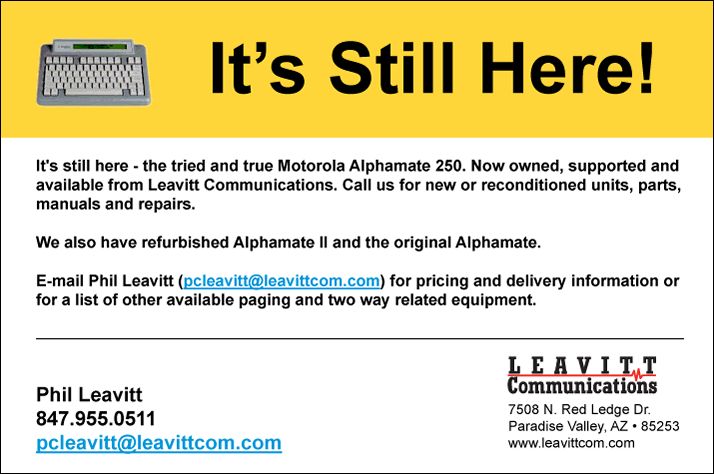

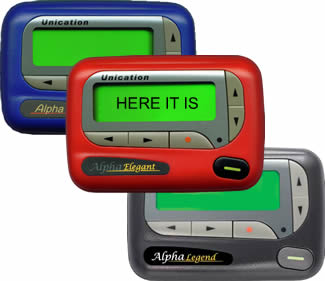
 NEW ALERT AND RINGTONE AMPLIFIER
NEW ALERT AND RINGTONE AMPLIFIER 


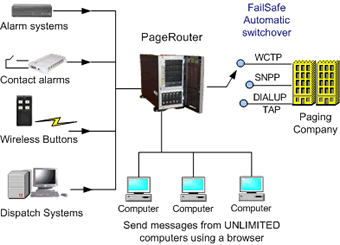







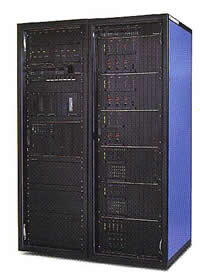

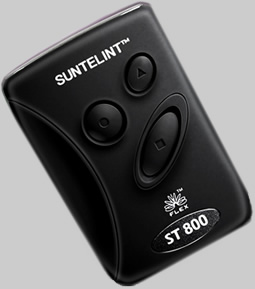
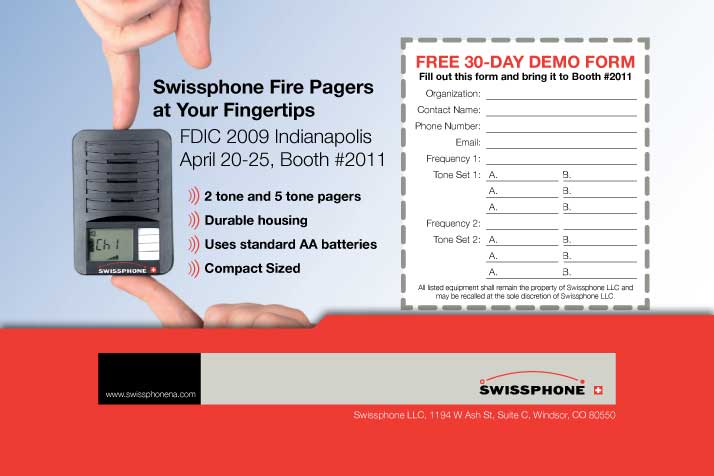
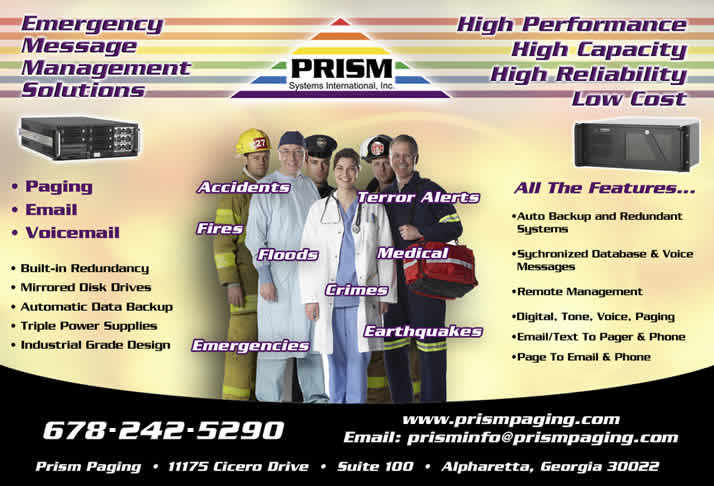
 Already T-Mobile in Germany is fighting to keep Skype off of the iPhone. Canada's least favorite ISP, Rogers, is doing the same.
Already T-Mobile in Germany is fighting to keep Skype off of the iPhone. Canada's least favorite ISP, Rogers, is doing the same. 



